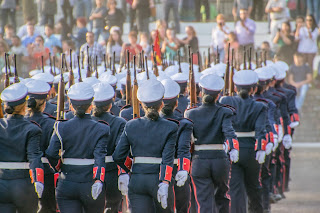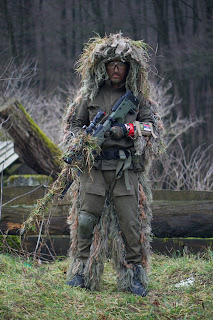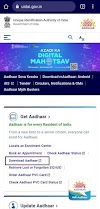Essential parts Of field craft| NCC| Army|Navy| Air force
The soldiers of any country must know the essential parts of field craft which is help ful in wars
Field Craft is an art of making the best use of the available ground. While applying field craft soldiers can attack the enemies in a smarter way. The Advantages of Field Craft: Useful in tackling minor tactical problems without confusion but the basic knowledge of field signals, section & platoon formations is essential.
Essential Parts of Field Craft
A) Judging distancesB) Covers
C) Camouflage and Concealment
D) Indication and recognition of targets
E) Fire and movement
F) Field signals
A) JUDGING DISTANCES
What is judging distance?
As we know, every weapon has a shooting range and impact of its own. Therefore, it is essential to determine the distance between the weapon (or shooter) and its target for appropriate firing. The distance can be found out by the following methods:
1. Unit of Measurment Method: In this method, we take any of the simple and convenient unit (say 100 yards) and determine the distance between the target and the shooter in multiples of 100 yards.
2. Appearance Method: Same object may appear differently at different distances. A human being may appear :
- at a distance of 200 yds - the full human picture with parts visible.
- at a distance of 250 yds - a person at a kneeling position is covered by the foresight blade.
- at a distance of 300 yds - face turns diminished (hazy)
- at a distance of 400 yds - face can not be recognised, the foresight blade covers a standing person.
- at a distance of 500 yds - the body over the shoulders looks comparatively taper. The body movements can be noticed.
- at a distance of 600 yds - the human head appears like a point and body below the shoulders looks taper
3. Bracketing: In this method, we take the maximum and minimum estimation of distance and then take its average.
4. Section Average Method: In this method, distance is judged by each soldier. These distances are summed up and then divided by the total number of soldiers to get the average.
5. Key Range Method: In this method, anything whose distance is known, is taken for help, to determine the distance, like-milestones, telephone poles, etc.
6. Halving Method: In this method, the "half" distance of an object is guessed and then it is made "double to find the desired distance.
There may arise certain problems in measuring the distance:
1. When distances are overestimated, the reasons are
- Non-availability of proper light.
- Sun, just before the eyes
- Judging through a valley
- Observer, in a lying position
- Small size of the object (target) as compared to rest of the objects around
2. When distances are underestimated, the reasons are
- Bright light
- Sun behind the observer
- Looking in upward direction from lying down the hill
- Big size of the object (target) as compared to rest of the objects around.
B) COVERS
A cover symbol a place where a soldier can hide himself and attack the enemy easily, without being captured. This is the place, where movements are easily conducted and which is an ideal destination for rest and relaxation for a long time". In a cover, an enemy can not watch or attack its counter (rival). Covers are of two types:
1.Cover from view: Hiding oneself behind bushes, plants and broken grounds is the cover from view.
2. Cover from fire: Hiding oneself behind a wall or huge tree.
The proper manners to use cover are :
- Whenever possible look through the cover and not over it.
- If it is not possible to look through the cover, look round it rather than over it.
- If it is necessary to look over the cover, avoid breaking skyline.
- The skyline is the worst background you could choose, but if you cannot avoid observing over the cover and against the skyline, use something to break your silhouette.
- When firing from inside a building, keep well back making use of the shadow.
- A rough, dark and irregular background which matches your clothing, provides considerable cover from view.
- Isolated cover is dangerous because it will attract attention of the enemy and can be easily indicated in a fire order.
C) CAMOUFLAGE AND CONCEALMENT
Camouflage is the art of making use of artificial articles to achieve concealment. Concealment is hiding oneself from enemy's view and fire, with the help of natural background.
The various factors which aid recognition are:
- (a) Shape, (b) Shadow, (c) Silhouette, (d) Surface, (e) Spacing, (f) Movement, (g) Shine, (h) Position, (i) Contrast, and (j) Noise, sound and activity.
The fundamental ways of concealing activities:
- Hiding: It is complete concealment of an object by placing a screen between the object and the observer.
- Blending : It is the arrangement of camouflage materials on, over and around the object so that it appears to be part of the surroundings. The aim is to prevent detection of the object by a change in natural appearance of the position.
- Deceiving: Deceiving simulates an object or disguises it so that it appears to be different.
Principles of Good Camouflage and Concealment
1. Conceal shine & shape
2. Make use of shadow
3. Avoid skyline
4. Slow movement
5. Merge with natural colour and surroundings
6. Avoid unnecessary movements scanned
7. Avoid reflections in water
8. Change the camouflage articles according to the suitability of time and circumstances.
D) INDICATION AND RECOGNITION OF TARGETS
In the battle field, it is essential to make aware the soldiers about the surface symbols and other marks of indications, so that the soldier may fire on the appropriate target.
But, sometimes it becomes difficult because there can be many things of similar shape, which makes the indication really tough. Before indicating the target, a soldier is made aware about the types of ground, limits of section and the famous landmark of the place.
The ground is divided into three parts:
1. Foreground upto 300 yds
2. Middle distance 300 to 500 yds
3. Distance more than 500 yds
Types of Ground
1. Broken ground - affords good cover but slow movement
2. Dead ground - not visible to the firer because of depth.
3. Open ground - flat observation, easier and quicker movement.
4. High ground - provides good movement,
5. Low ground - not as deep as dead ground
6. Slopy ground - which has a slope for the required movement
The common mistakes in the use of ground are that :
(i)Carelessness by troops while making a reconnaissance, such as unfolding a map in the open or not using a covered approach.
(ii) Unnecessary movement in a position overlooked by the enemy.
(iii) Using conspicuous landmarks such as isolated trees, bushes or cottages
(iv) Halting troops near road or track junctions or other mapped features which are always registered as targets by the enemy.
(v) Bad track discipline.
(vi) Failure to guard against enemy air observation.
INDICATION OF SIMPLE TARGETS
1. By simple naming
eg. No. 1 Section-300-factory
2. By General line of direction
eg. No. 1 Section-3-half left-hut
3 By last target
eg. No. 1 Section-30 last target slightly right-lane tree
4 Indication by description-simple famous targets are spoken straight
eg. Section bridge
5. Indication by direction or range of both
eg.
By direction No. 1 Section, half right, mosque
By range No. 1 Section, 300 mosque
By both No. 1 Section, half right 300, mosque
INDICATION OF DIFFICULT TARGETS
1. The Reference Point Method
eg. No. 1 Section, 300, half left, temple, name of the temple (help mark) Slightly right, Banyan tree
2 By General line of direction
eg. No. 1 Section, 500, look forward, single tree, name of the tree, slightly left, three trees.
3. The Clock Ray Method
Here, the "help mark" is considered 12 o'clock and then target is indicated. eg. No. 1 Section, 600, half left, bridge 3 o'clock enemy's post.
4. The Degree Method
The ' Degree' is taken as a help factor to simplify the target. eg. No. 1 Section, 400, half right, bridge, 4 o'clock, 5 tree, enemy's post.
For full details of fire movement and field signals please click the link ginven below 👇👇
https://freegooglestudy.blogspot.com/2021/05/positions-of-filed-signals.html
For any doubts please comment below
Thank you







Post a Comment
1 Comments
I am proud becance of ncc sir
ReplyDelete